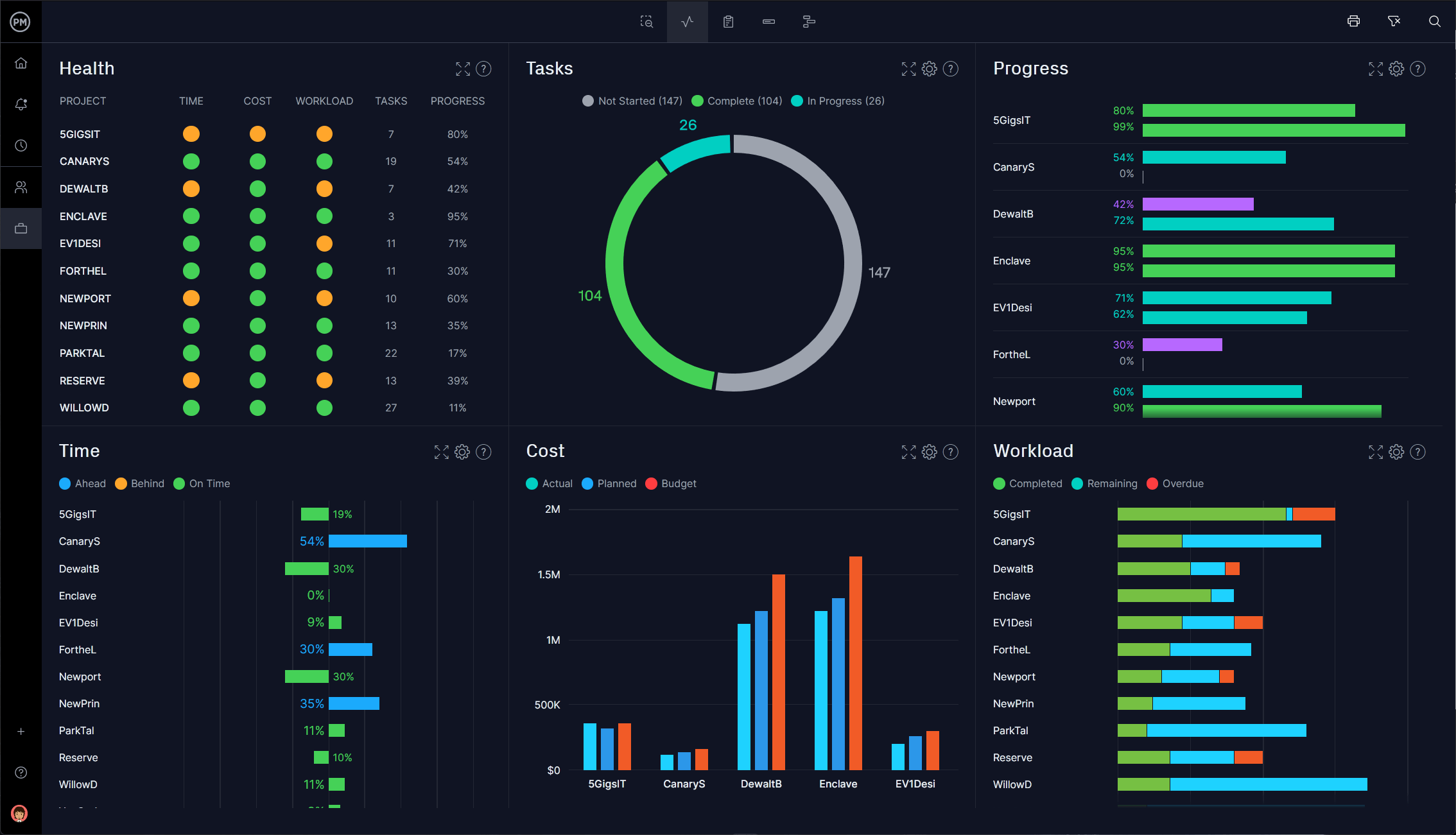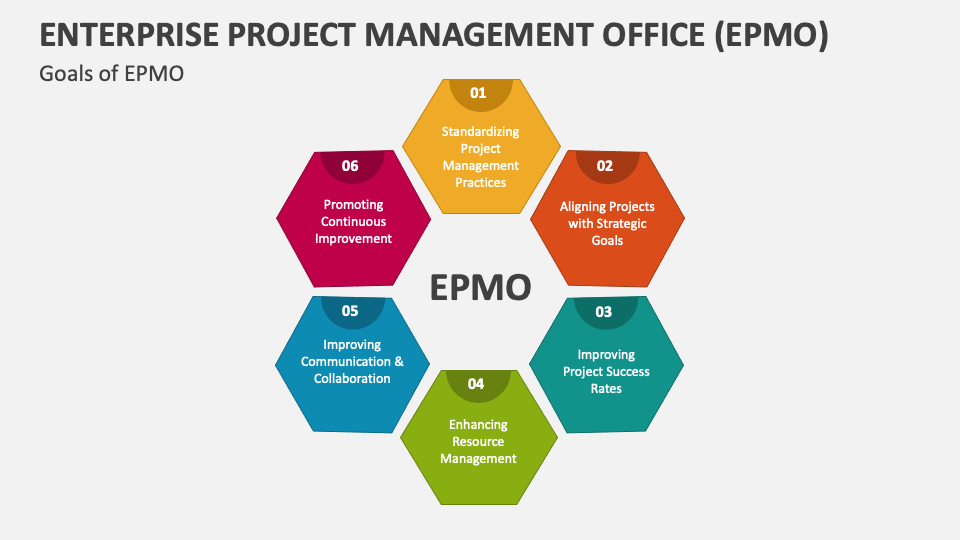Introduction to Enterprise Project Management
In today’s fast-paced business environment, organizations are constantly seeking ways to improve efficiency, reduce costs, and achieve strategic objectives. Enter Enterprise Project Management (EPM) – a powerful framework that has revolutionized how businesses manage their projects and resources. As we step into 2025, EPM has become more crucial than ever before, with the increasing complexity of global markets and the rapid pace of technological advancements.
If you’re a project manager, business owner, or leader responsible for overseeing multiple complex projects, this comprehensive guide will provide you with invaluable insights into EPM. We’ll explore its definition, importance, key components, challenges, and best practices, equipping you with the knowledge to transform your organization’s project management approach.
What is Enterprise Project Management?
Defining EPM
Enterprise Project Management is a strategic approach to managing projects across an entire organization. Unlike traditional project management, which focuses on individual projects, EPM takes a holistic view, aligning all projects with the company’s overarching goals and objectives. It’s not just a methodology; it’s a cultural shift that enables businesses to optimize resources, manage risks, and drive success across all projects simultaneously.
The Evolution of EPM
The concept of EPM has evolved significantly since its inception. Initially, it was seen as a way to centralize project management efforts. However, as businesses have become more complex and globally distributed, EPM has adapted to become more flexible and integrated with other business processes. In 2025, EPM is no longer just about managing projects – it’s about creating a cohesive ecosystem that drives organizational success.
EPM vs. Traditional Project Management
While traditional project management focuses on delivering individual projects on time and within budget, EPM takes a broader perspective. It considers how each project contributes to the organization’s strategic goals, how resources are allocated across multiple projects, and how risks and opportunities at the project level impact the entire organization. This wider lens allows for more informed decision-making and better alignment of project outcomes with business objectives.
The Importance of Enterprise Project Management
Strategic Alignment
One of the primary benefits of EPM is its ability to ensure that all projects undertaken within an organization support its strategic objectives. This alignment is crucial in today’s competitive landscape, where resources are often limited, and every initiative must contribute to the bottom line. EPM provides a framework for evaluating project priorities against strategic business goals, streamlining the decision-making process and ensuring that resources are invested in the most impactful initiatives.
Resource Optimization
In the world of EPM, resources are viewed as organizational assets rather than project-specific tools. This perspective allows for more efficient allocation and utilization of resources across various projects. By having a bird’s-eye view of all ongoing and planned projects, organizations can balance workloads, avoid resource conflicts, and ensure that skills and talents are used where they can create the most value.
Enhanced Risk Management
With multiple projects running simultaneously, the potential for risks can multiply exponentially. EPM provides a structured approach to identifying, assessing, and mitigating risks at both the project and organizational levels. This comprehensive risk management strategy helps minimize disruptions to operations and protects the organization’s overall objectives.
Improved Communication and Collaboration
EPM fosters better communication among departments, stakeholders, and project teams. By implementing integrated reporting and review processes, leadership teams gain better insights into project progress and can make informed decisions faster. This improved communication flow also enhances collaboration, breaking down silos and creating a more cohesive organizational culture.
Data-Driven Decision Making
In the age of big data, EPM leverages advanced analytics to provide real-time insights into project performance, resource utilization, and strategic alignment. This data-driven approach enables leaders to make more informed decisions, identify trends, and proactively address issues before they escalate. As we move further into 2025, the role of data in EPM continues to grow, with artificial intelligence and machine learning playing increasingly important roles in project forecasting and optimization.

Key Components of Enterprise Project Management
Portfolio Management
Portfolio management is a critical component of EPM, encompassing the selection and management of a collection of projects or programs that align with strategic objectives. It involves:
- Evaluating and prioritizing project proposals
- Balancing the portfolio to ensure a mix of high-risk, high-reward projects and more stable initiatives
- Continuously monitoring and adjusting the portfolio based on changing business conditions
Effective portfolio management ensures that the organization invests in initiatives that add the most value and contribute significantly to its strategic goals.
Program Management
Program management involves coordinating related projects to achieve benefits that wouldn’t be possible if the projects were managed independently. Key aspects of program management in EPM include:
- Identifying and managing interdependencies between projects
- Ensuring consistent approaches and methodologies across related projects
- Realizing synergies and economies of scale
By grouping related projects, organizations can more efficiently coordinate strategies, processes, and initiatives, leading to better outcomes and more significant business impact.
Resource Management
Effective resource management is a cornerstone of successful EPM. It involves organizing and allocating resources – human, financial, and technological – in a way that supports project and business goals with maximum efficiency and impact. In 2025, advanced resource management tools have become integral to EPM, allowing for:
- Real-time tracking of resource availability and utilization
- Predictive analytics for resource demand forecasting
- Skill-based resource allocation to ensure the right people are on the right projects
These capabilities enable organizations to optimize their resource usage, reduce conflicts, and enhance overall project performance.
Performance Measurement and Reporting
EPM requires robust mechanisms for performance tracking and reporting to maintain efficacy. This component involves:
- Establishing key performance indicators (KPIs) aligned with strategic objectives
- Implementing real-time dashboards for monitoring project and portfolio performance
- Creating integrated reporting systems that provide a holistic view of project health and organizational impact
In 2025, advanced analytics and AI-driven insights have become standard in EPM reporting, providing predictive capabilities and actionable recommendations for project optimization.
Governance and Standardization
A strong governance framework and standardized processes are essential for successful EPM implementation. This includes:
- Defining clear roles and responsibilities for project management at all levels
- Establishing standardized methodologies and best practices across the organization
- Implementing stage-gate processes for project approval and progression
Effective governance ensures consistency, transparency, and accountability in project management practices across the enterprise.
Challenges in Implementing Enterprise Project Management
Cultural Resistance
One of the most significant challenges in implementing EPM is often the cultural shift required. EPM demands an organizational culture that embraces collaboration, transparency, and strategic coherence – a change that can encounter resistance at various levels of an organization. Overcoming this resistance requires:
- Clear communication of the benefits of EPM
- Leadership support and championing of the EPM initiative
- Gradual implementation and change management strategies
Organizations must recognize that cultural change is a journey, not a destination, and be prepared for ongoing efforts to sustain an EPM-friendly culture.
Complexity and Integration
Integrating disparate systems, processes, and tools can be complex and challenging. Achieving seamless integration is crucial for EPM success but involves meticulous planning and execution. Common integration challenges include:
- Incompatible legacy systems
- Data silos and inconsistent data formats
- Resistance to adopting new tools and processes
Overcoming these challenges often requires a phased approach to integration, coupled with robust change management and training programs.
Change Management
Implementing EPM involves significant changes to existing processes and sometimes even organizational structure. Effective change management strategies are vital to ensure smooth transitions and adoption across the enterprise. Key aspects of change management in EPM implementation include:
- Stakeholder engagement and communication
- Training and skill development programs
- Continuous feedback and improvement loops
Organizations must be prepared to invest time and resources in change management to realize the full benefits of EPM.
Technology Selection and Implementation
Choosing the right technology to support EPM can be a daunting task. With a plethora of project management tools and enterprise systems available, organizations must carefully evaluate their needs and select solutions that align with their EPM goals. Challenges in this area include:
- Balancing functionality with user-friendliness
- Ensuring scalability and flexibility for future growth
- Managing the costs of implementation and ongoing maintenance
Careful vendor selection, thorough testing, and a well-planned implementation strategy are crucial for overcoming these challenges.

Best Practices for Enterprise Project Management
Secure Top-Down Buy-In
Ensuring executives and senior management understand and fully support the EPM approach is critical. Their buy-in can help drive the organizational change needed for EPM success. Best practices include:
- Developing a clear business case for EPM implementation
- Regular updates and demonstrations of EPM benefits to leadership
- Involving executives in key EPM decisions and milestone reviews
When leadership is actively engaged and supportive, it sets the tone for the entire organization and significantly increases the chances of EPM success.
Customize Methodologies
While frameworks like Agile, Scrum, and PMBOK can guide, customization to suit organizational needs is essential. Consider your organizational structure, culture, and existing processes when implementing EPM methodologies. Best practices for customization include:
- Conducting a thorough assessment of current project management practices
- Identifying which aspects of various methodologies align best with organizational goals
- Gradually introducing new practices and continuously refining based on feedback
Remember, the goal is to create an EPM approach that works for your organization, not to rigidly adhere to any single methodology.
Invest in Technology
EPM thrives on tools that facilitate collaboration, reporting, and real-time analysis. Investing in reliable project management software or enterprise system is crucial for building a robust EPM infrastructure. When selecting and implementing technology:
- Focus on solutions that offer integrated portfolio, program, and project management capabilities
- Prioritize user-friendly interfaces to encourage adoption
- Look for tools with strong analytics and reporting features
Remember, technology should enable and enhance your EPM processes, not dictate them. Choose tools that can be customized to fit your specific needs.
Prioritize Regular Training and Development
Continuous learning and development are crucial to empower your teams with the necessary skills to work within the EPM framework. This not only boosts confidence but also reinforces an EPM-friendly culture. Best practices for training and development include:
- Developing a comprehensive training program covering EPM principles and tools
- Offering both formal training sessions and informal learning opportunities
- Encouraging certifications in relevant project management methodologies
Invest in your people, and they will invest in the success of your EPM initiatives.
Establish Clear Metrics and KPIs
To truly leverage the power of EPM, it’s essential to establish clear metrics and key performance indicators (KPIs) that align with your organizational goals. This allows for effective performance measurement and continuous improvement. Best practices include:
- Defining a balanced set of KPIs that cover financial, operational, and strategic aspects
- Ensuring KPIs are SMART (Specific, Measurable, Achievable, Relevant, Time-bound)
- Regularly reviewing and adjusting KPIs to ensure they remain relevant and actionable
Remember, what gets measured gets managed. Choose your metrics wisely to drive the right behaviors and outcomes.
Future Trends in Enterprise Project Management
AI and Machine Learning Integration
As we move further into 2025, the integration of artificial intelligence (AI) and machine learning (ML) in EPM is becoming increasingly prevalent. These technologies are revolutionizing how projects are planned, executed, and monitored. Some key applications include:
- Predictive analytics for risk assessment and resource allocation
- Automated scheduling and task prioritization
- Natural language processing for project documentation and communication analysis
Organizations that embrace these technologies will have a significant competitive advantage in their EPM practices.
Remote and Distributed Team Management
The trend towards remote and distributed teams, accelerated by global events in recent years, continues to shape EPM practices. Future-focused EPM strategies must account for:
- Virtual collaboration tools and platforms
- Asynchronous communication methods
- Cultural sensitivity and time zone management
Successful EPM in 2025 and beyond will require mastery of these distributed work environments.
Sustainability and Social Responsibility
As organizations increasingly prioritize sustainability and social responsibility, EPM is evolving to incorporate these considerations. Future trends include:
- Integration of environmental impact assessments into project planning
- Social value metrics in project evaluation and selection
- Emphasis on sustainable and ethical sourcing in project execution
EPM will play a crucial role in helping organizations achieve their sustainability goals and meet stakeholder expectations for responsible business practices.
Conclusion
Enterprise Project Management offers a comprehensive approach for managing projects effectively across an organization. By aligning projects with strategic objectives, optimizing resource use, and mitigating risks, EPM can drive business success in 2025 and beyond. However, overcoming challenges such as cultural resistance and integrating existing systems is essential.
Through a committed approach to best practices and an eye on future trends, organizations can harness the full potential of EPM. This not only improves project success rates but also creates a resilient structure capable of evolving with industry changes and demands.
As we navigate the complex business landscape of 2025, EPM stands as a beacon for organizations seeking to streamline their operations, enhance their strategic alignment, and achieve sustainable growth. The journey to EPM excellence is ongoing, requiring continuous learning, adaptation, and innovation.
Start today by enhancing your EPM practices and watch your organization thrive in the face of future challenges and opportunities. Remember, the success of your enterprise project management initiative begins with the changes you embrace today.
For more in-depth insights or consultation on implementing Enterprise Project Management in your organization, consider reaching out to experts in the field or exploring additional resources such as:
- Project Management Institute (PMI) for the latest research and best practices in project management
- This YouTube video on Enterprise Project Management fundamentals for a visual overview of key concepts
- Industry-specific EPM case studies to learn from real-world implementations and outcomes
Your journey towards EPM excellence starts now. Embrace the change, invest in the right tools and people, and position your organization for success in the dynamic business landscape of 2025 and beyond.
